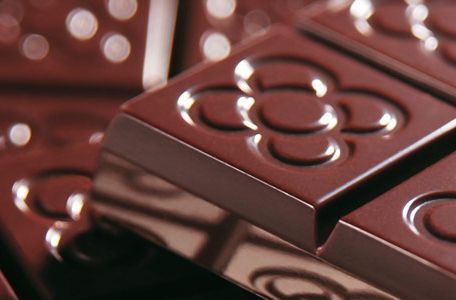
03/03/2016
NCD Beamline at ALBA Synchrotron: When X-Rays Make Chocolate Speak
NCD Beamline at ALBA Synchrotron: When X-Rays Make Chocolate Speak
Easter is around the corner and in many places chocolate is usually offered on that occasion. It gives a good opportunity to explain a recent and original use of ALBA synchrotron, namely a research on cacao cream solidification.
The way cacao cream solidifies – the way it crystallizes or the way molecules self-organize as physicists would say – is crucial. The way chosen determines not only the tactile and visual aspect that is very important by the way, but also the gustative sensation: to each of the different crystallized structure obtained corresponds a different melting temperature on the palate.
Therefore, the understanding of the crystallisation mechanisms involved allows controlling and improving the manufacturing process. With that goal in mind, chocolate maker Enric Rovira has joined forces with researcher Laura Bayés García and her colleagues from the crystallography department of the Universitat de Barcelona to investigate the so-called velvet chocolate texture that provides an original sensation of freshness on the palate.
Thanks to the NCD ALBA beamline X-rays, it has been deduced that this singular texture is due to the manufacturing process (cacao cream sprayed on a chilled solidified chocolate substrate) that produces crystals much more tiny than in the normal chocolate: this size difference leads to a 2-degree lower melting temperature of the coated velvet-structured chocolate compared to the substrate that causes the sensation of freshness.
This research work resulted in a scientific paper published in Crystal Growth and Design. This is a clear illustration of how the frontier between basic and applied sciences can be blurred: how cacao cream molecules solidify is both a pure crystallography problem and an industrial challenge.
Enjoy your chocolate!
The way cacao cream solidifies – the way it crystallizes or the way molecules self-organize as physicists would say – is crucial. The way chosen determines not only the tactile and visual aspect that is very important by the way, but also the gustative sensation: to each of the different crystallized structure obtained corresponds a different melting temperature on the palate.
Therefore, the understanding of the crystallisation mechanisms involved allows controlling and improving the manufacturing process. With that goal in mind, chocolate maker Enric Rovira has joined forces with researcher Laura Bayés García and her colleagues from the crystallography department of the Universitat de Barcelona to investigate the so-called velvet chocolate texture that provides an original sensation of freshness on the palate.
Thanks to the NCD ALBA beamline X-rays, it has been deduced that this singular texture is due to the manufacturing process (cacao cream sprayed on a chilled solidified chocolate substrate) that produces crystals much more tiny than in the normal chocolate: this size difference leads to a 2-degree lower melting temperature of the coated velvet-structured chocolate compared to the substrate that causes the sensation of freshness.
This research work resulted in a scientific paper published in Crystal Growth and Design. This is a clear illustration of how the frontier between basic and applied sciences can be blurred: how cacao cream molecules solidify is both a pure crystallography problem and an industrial challenge.
Enjoy your chocolate!
More news
26/03/2014
New companies in the UAB Research Park
18/03/2014
The public-private partnership ESTEVE-UAB is bearing fruit
11/03/2014
Barcelona ranked fourth place among the most attractive European cities for investors
24/02/2014
Zero2infinity offers sightseeing flights in the stratosphere
18/02/2014
Students from Harvard visited the Barcelona Synchrotron Park and ALBA
11/02/2014
Applications of the Alba synchrotron in the materials and chemistry industries









